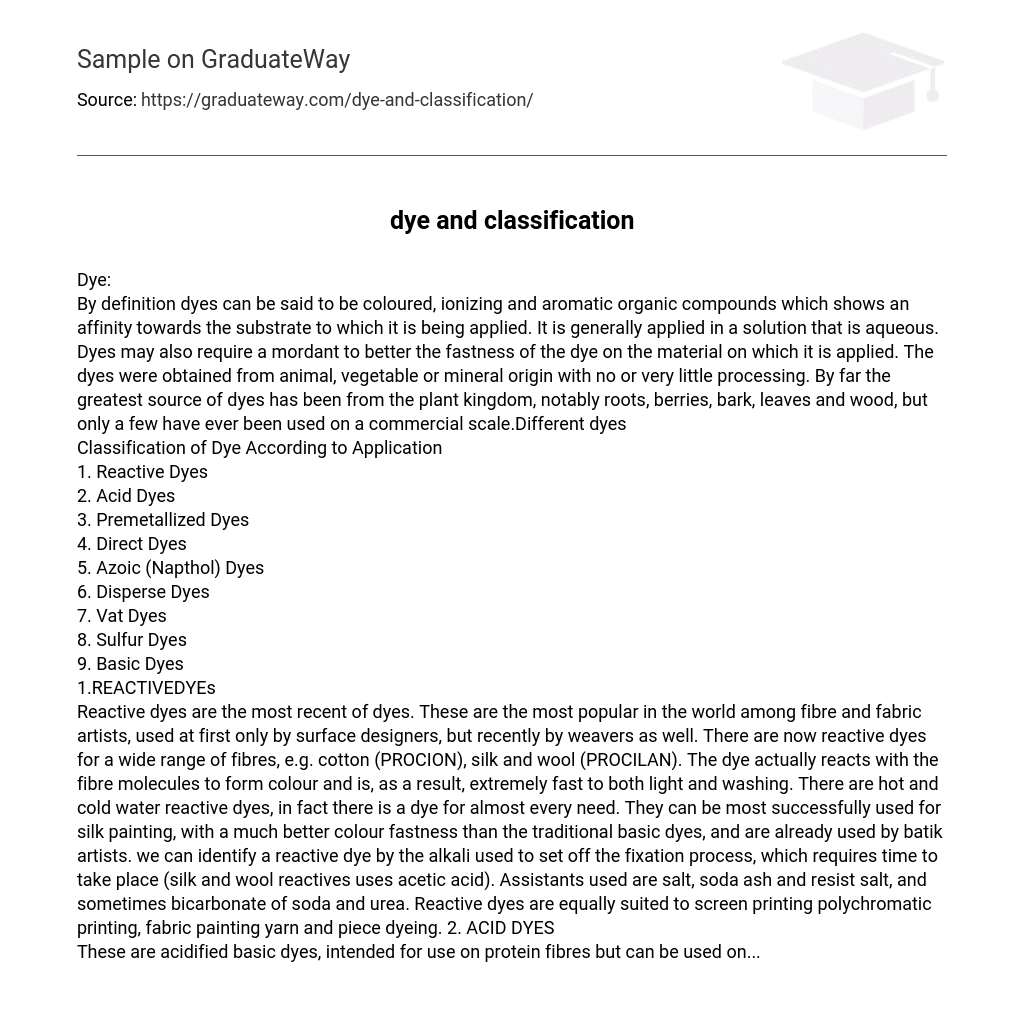By definition, dyes can be said to be coloured, ionizing and aromatic organic compounds which show an affinity towards the substrate to which it is being applied. It is generally applied in a solution that is aqueous. Dyes may also require a mordant to better the fastness of the dye on the material on which it is applied. The dyes were obtained from animal, vegetable or mineral origin with no or very little processing. By far the greatest source of dyes has been from the plant kingdom, notably roots, berries, bark, leaves and wood, but only a few have ever been used on a commercial scale. Different dyes Classification of Dye According to Application
- Reactive Dyes
- Acid Dyes
- Premetallized Dyes
- Direct Dyes
- Azoic (Napthol) Dyes
- Disperse Dyes
- Vat Dyes
- Sulfur Dyes
- Basic Dyes.3
Reactive dyes are the most recent of dyes. These are the most popular in the world among fibre and fabric artists, used at first only by surface designers, but recently by weavers as well. There are now reactive dyes for a wide range of fibres, e.g. cotton (PROCION), silk and wool (PROCILAN). The dye actually reacts with the fibre molecules to form colour and is, as a result, extremely fast to both light and washing. There are hot and cold water reactive dyes, in fact there is a dye for almost every need. They can be most successfully used for silk painting, with a much better colour fastness than the traditional basic dyes, and are already used by batik artists. we can identify a reactive dye by the alkali used to set off the fixation process, which requires time to take place (silk and wool reactives uses acetic acid). Assistants used are salt, soda ash and resist salt, and sometimes bicarbonate of soda and urea. Reactive dyes are equally suited to screen printing polychromatic printing, fabric painting yarn and piece dyeing. These are acidified basic dyes, intended for use on protein fibres but can be used on…





